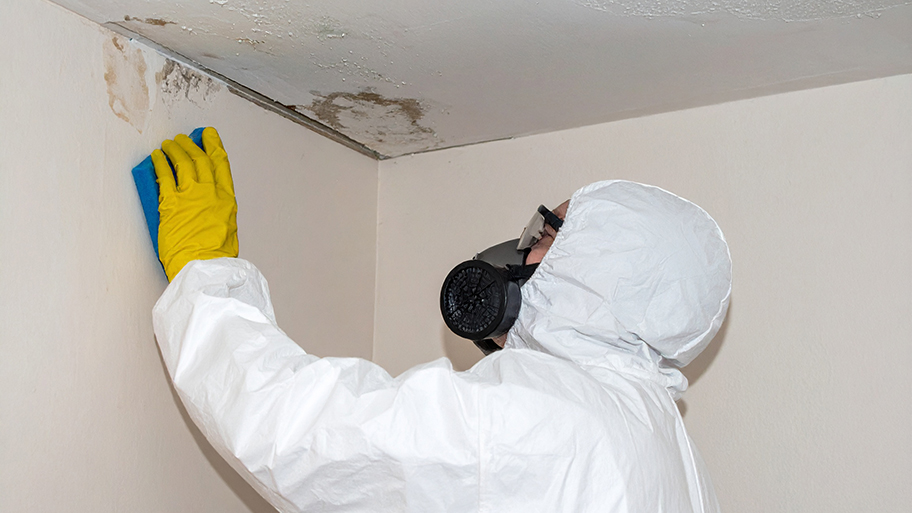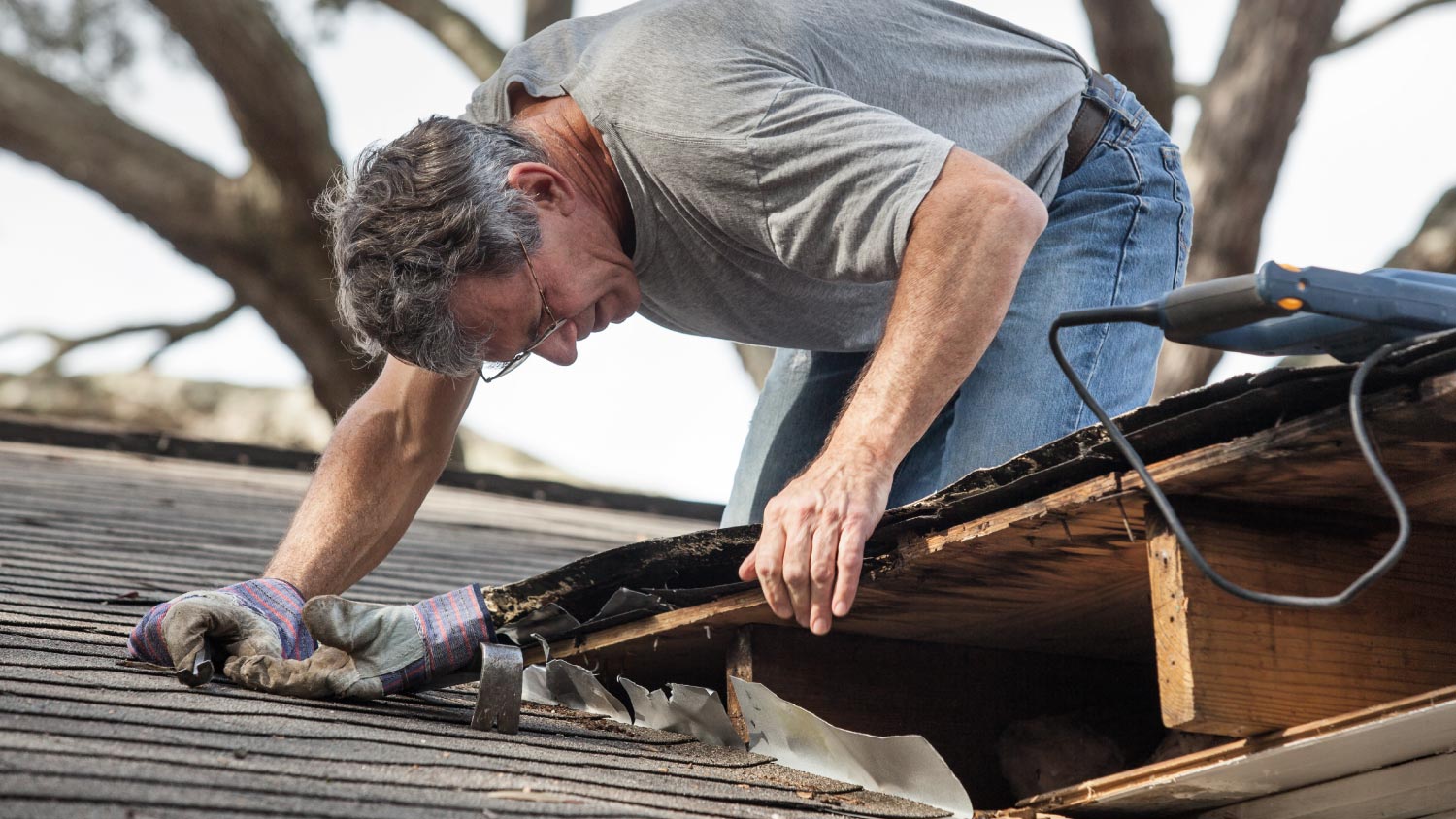
Mold remediation cost can quickly escalate. But if you have mold in your home, the cost for mold remediation is worth it.
Don't let ongoing mold issues bring down the house


A burst pipe, flooded basement, or even a particularly muggy summer can have you worrying about mold creeping around your home—seen or unseen. The hundreds of thousands of types of mold in this world need just water, food, and as little as 24 hours to start eating away at some of the most common home materials.
However, if you act quickly to reduce moisture in your home, inspect it for mold, and call in a local mold removal team, you can get ahead of these potential damages and lower the cost of mold remediation.

From hardwood floors to vinyl tiles, mold can grow on, in between, and under your floorboards. Flooding, broken pipes, or even failing to fully dry your floors after washing them can lead to mold buildup. And as a cellulose material—the food of choice for most molds—wood is highly susceptible to mold growth, even if you can't see or smell its damage at first.
When it comes to harder materials like vinyl, ceramic, and glass tiles, the real issue lies underneath the flooring, especially if it was not sealed correctly when installed. Severe mold damage can warp wooden boards, spread odors that trigger respiratory issues, and eventually threaten the stability of the flooring.
Signs of mold in your flooring include:
Musty smells that do not go away with regular cleaning
Discoloration on wood planks
Dark spots of signs of climbing molds around the edges of tiles
Warped or bulging floorboards
Flooring repair for mold remediation costs between $200 and $550 on average depending on the size of the issue and the type of flooring.

Speaking of flooring, wall-to-wall carpeting and area rugs are, unfortunately, not a foolproof way to fight off mold. Moisture in the air, spills, or even small amounts of flooding can cause mold to grow in a carpet. Always assume that water damage can lead to mold within 24 to 48 hours if the area is not completely dried, cleaned, and well-ventilated. Even if you do your due diligence, you’ll still want to keep an eye on things.
You may detect the physical visible of mold, discoloration from mildew—remember, mildew is a common type of mold—or musty odors throughout your home. It's also important to check the pad beneath your carpet. Foam pads without antimicrobial properties easily absorb water and can encourage mold growth.
Removing mold from carpets costs between $800 and $2,600 and an average of $1,800 for the price of new carpet installation.

That old pipe you've been meaning to fix finally burst and left an awful stain on the bathroom wall. And while water damage and mold damage differ, the latter often follows the former.
Mold can break down both the aesthetic and weight-bearing structures in your wall—from the drywall to the studs. And while you may spot black, brown, gray, or green mold spots on the outside of your walls, mold also flourishes inside your walls and insulation, making it trickier to find in the early days.
After about three weeks, you will likely be able to spot mold growth on the exterior of your walls or see your paint peeling. If left unchecked for years, it could lead to the collapse of the wall or drywall materials.
Wall repair costs for mold can be quite extensive, ranging anywhere from $1,000 to $2,000 depending on which parts of the wall require cleaning and replacement.

While mold depends on soft materials like wood, paper, or insulation for a good meal, it can live on some metals. This factor puts your HVAC air ducts, and even your radiant heat system, at risk for mold and mildew buildup. Mold in your air ducts likely won't break down the system entirely, but it can lead to reactions in people sensitive to allergens like mold.
Removing mold from your HVAC system can cost between $3,000 and $10,000 depending on its location and the extent of the damage.

Your roof handles a lot of pressure throughout the year, especially when it comes to moisture and humidity. The space beneath your shingles, in between rafters, and in the open spaces between your fascia and the side of your home are all susceptible.
If the mold eventually breaks down the structural elements of your roof or penetrates your ceiling joists, it could lead to a sagging roof or complete collapse. Additionally, a weaker roof means there are more opportunities for leaks, pests, and temperature control issues throughout your home.
Roofs are not only a favorite spot for mold but also algae and moss. It's easy to spot a buildup of green algae on roofs from the ground, leading to an aesthetic issue as well as a structural one.
The cost of roof repair ranges from $360 to $1,550 on average, but the cost to remove mold from your roof and attic can range from $1,000 to $4,000.

The lowest rooms in our homes sit right up against the water table, often on top of a stone or concrete foundation. Moisture can move through these materials by capillary action, sending mold-welcoming moisture right into an unsealed space. The lack of ventilation in a basement or crawlspace can also contribute, leading to persistent mold and mildew growth on both hard and porous surfaces.
Mold can cause costly problems in both finished and unfinished basements. It can break down the integrity of subflooring overhead, wooden support beams, and any finished flooring like carpet or tiles.
Removing basement mold costs around $500 to $3,000, while smaller crawl spaces typically set you back $500 to $2,000. Pros may also recommend encapsulation or waterproofing while adding to the final bill.
While keeping every spore of mold out of your home is impossible, you can make your space as uninhabitable as possible for its growth. Here are some tips for keeping mold growth at bay.
How to prevent mold:
Seal your home's exterior from moisture.
Install a dehumidifier in moist areas of your home such as the attic and basement.
Update old insulation to prevent mold growth in empty spaces.
Clean up water spills and small floods as soon as possible.
Fix outstanding leaks as soon as you detect them.
Follow EPA-approved cleaning standards for safely removing mold.
Investigate odd smells or water stains as soon as possible.
If you're past the point of prevention, order an at-home mold test to get ahead of the problem. These tests can even help you determine what type of mold you're dealing with. Call a mold remediation specialist in your area if the moldy area goes beyond 10 square feet, as recommended by the EPA’s cleaning standards, or if you’re not confident you can get rid of the mold yourself. Your home will thank you.
From average costs to expert advice, get all the answers you need to get your job done.

Mold remediation cost can quickly escalate. But if you have mold in your home, the cost for mold remediation is worth it.

The cost of a mold inspection might seem high, but it’s one of the best investments you can make for your health and home. Read on to learn cost-saving tips.

What causes mold? Excessive moisture in your home is likely to blame. Read on to learn more about what causes mold and how to prevent it.

There's an excellent reason why you should avoid going with the same company for mold testing and mold remediation. Learn why different companies should handle these tasks.

Common symptoms may indicate black mold in your AC unit. This guide walks you through what to look for when finding and preventing it.

Facing a pesky mold problem on your walls? Learn how to clean mold off drywall to freshen your home and keep spores away.